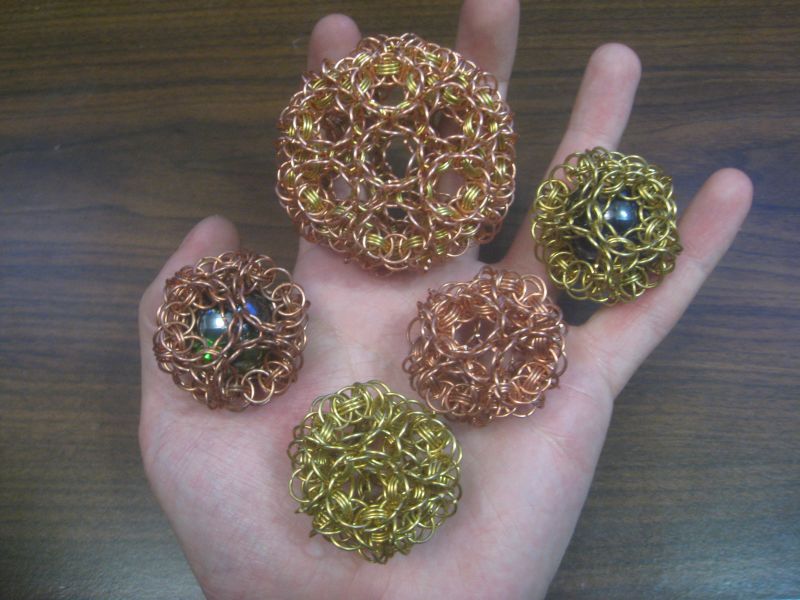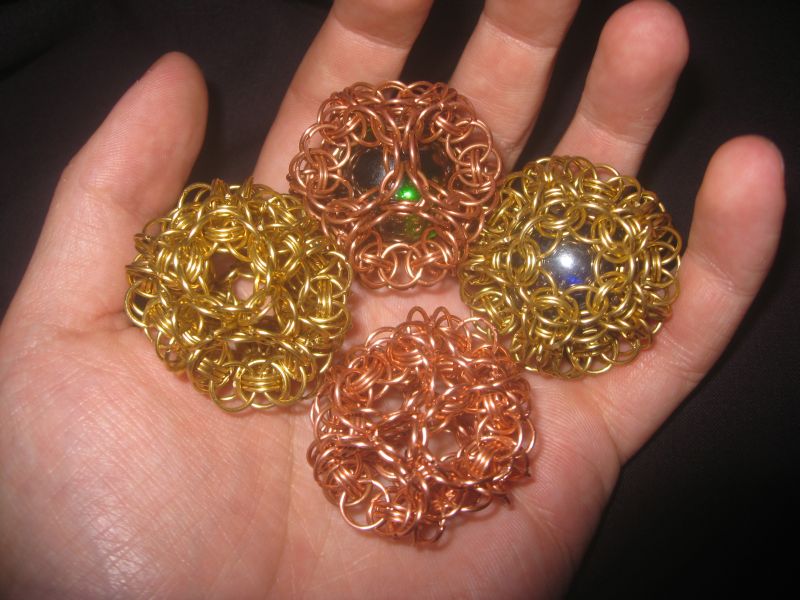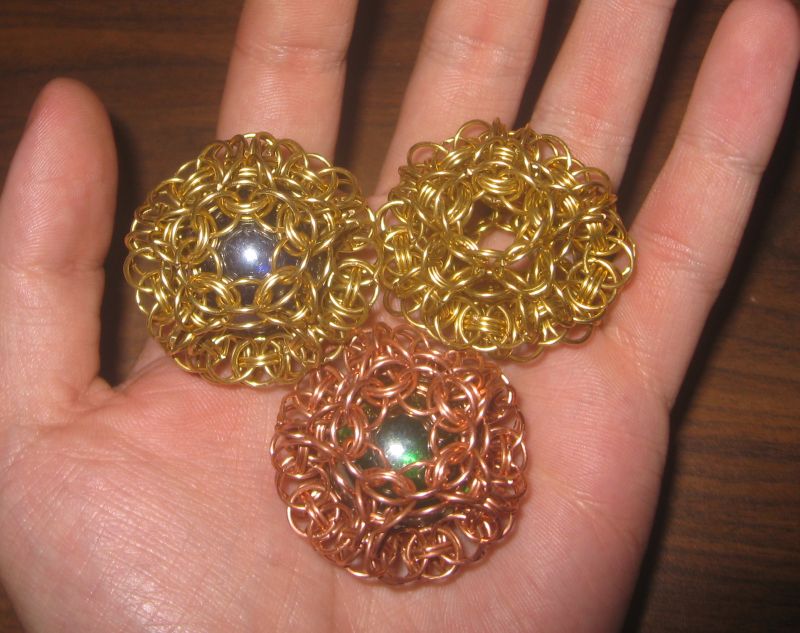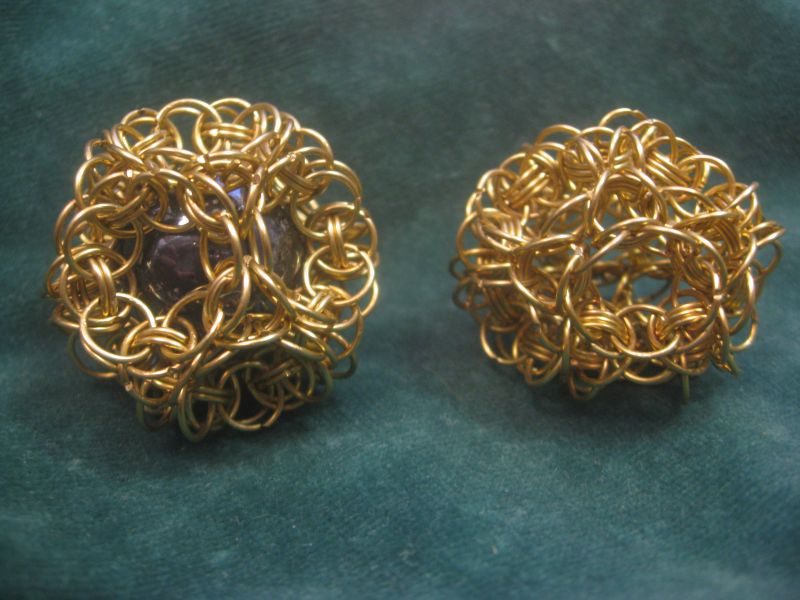
Matt's Awesome Stuff
Dodecahedrons & Truncated Icosahedrons
Last updated: 14Apr2012
The chainmaille weave "Hourglass" is rather useless on its own. But when sized just right, it makes for interesting framework for geometric shapes. I liked them so I coiled up some scrap wire while bored one day to make some. The double-orbital ones were floppier than the triple-orbital ones and had trouble standing on their own. Coincidentally the double-orbitals happened to perfectly fit some large marbles I had.

The little ones are "dodecahedrons". If you take squares and connect them flat you create normal graph paper. If you stand them on end you can create a box. If you take any regular hexagon and connect them, you get a honeycomb grid. But if you take any regular pentagon and try to connect them edge-to-edge (like I did here), you'll find that it refuses to lay flat. The only possible shape is a a 3d dodecahedron which uses 12 of them, (a d12, for you role playing gamers).
The big one (using the same size rings as the smaller ones) is a "truncated icosahedron." If you surround each pentagon with a ring of hexagons, you end up with a shape called a "truncated icosahedron." If you paint the pentagons black and the hexagons white, you'd call this a soccer ball (football anywhere else in the world). If you make the intersections carbon atoms, in chemistry it's called a "Buckyball" or "Buckminsterfullerene" after its discoverer.
I was possibly the 2nd person in the world to create an hourglass truncated icosahedron. Eric Winter was the first. Large geometric progressions are possible too. Christopher Shake created a "Rhombicosidodecahedron" which is a combination of pentagons, squares and triangles and is the largest geometric progression in chainmaille I know of to date.
A few more pics. Ring cuts are awful 'cause all I had were sidecutters that day (summer 2009). They're useless but make cute paperweights.


